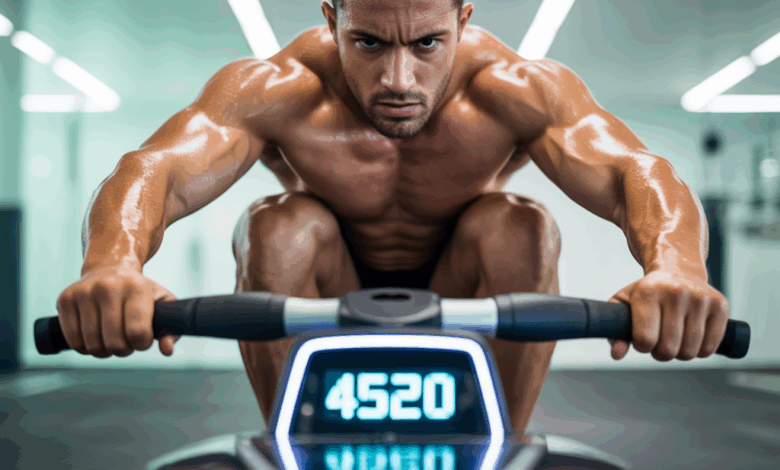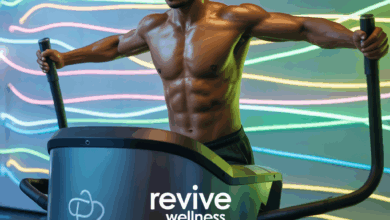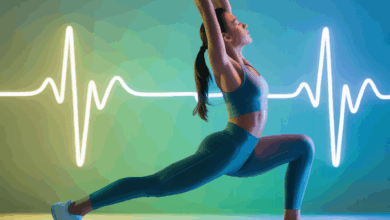How Many Calories Do You Burn on a Rowing Machine?

Ever wondered if that 30-minute session on the rowing machine is actually melting away calories — or if you could be doing more with your time? Picture yourself finishing a solid row, sweat dripping, and checking the monitor: what does that number really mean for your goals? Whether you’re training for fitness, weight loss, or cross-training, knowing how many calories you burn on a rowing machine helps you plan smarter workouts and nutrition.
How many calories do you burn on a rowing machine?
The short answer: it depends. Calories burned on an indoor rower vary based on bodyweight, workout intensity, duration, and your individual metabolism. Indoor rowing is a full-body, low-impact exercise that can burn anywhere from about 200 to 800 calories per hour depending on effort — making it one of the most efficient cardio options.
Factors that influence calories burned
- Bodyweight: Heavier people expend more energy to move their mass.
- Intensity: Easy steady-state rows use far fewer calories than high-intensity intervals.
- Duration: Longer sessions increase total calorie burn (but watch form and recovery).
- Technique: Efficient full-body technique (legs → core → arms) boosts output and reduces wasted motion.
- Machine calibration: Different ergometers and the onboard “calories” readouts can be inconsistent.
Real-world calorie examples
Using typical metabolic equivalents (METs) for moderate to vigorous rowing, here are ballpark numbers for a 30-minute session:
- 125 lb (57 kg): ~200–350 calories in 30 minutes (depending on intensity)
- 155 lb (70 kg): ~250–420 calories in 30 minutes
- 185 lb (84 kg): ~300–500 calories in 30 minutes
If you prefer per-hour estimates, a moderate-to-vigorous pace often falls between 400 and 600 calories per hour for many people — and vigorous interval training can push that number higher.
How to track calories accurately on a rowing erg
Onboard calorie counters are convenient but imperfect. For more accurate tracking:
- Use a heart-rate monitor and link it to your rower or fitness tracker.
- Use a rowing-specific calorie calculator or ergometer data combined with your bodyweight.
- Compare perceived exertion (RPE) to numbers: if the screen says low calories but you feel maxed out, trust your RPE and heart rate.
Best rowing workouts to maximize calorie burn
Switching up your routine prevents plateaus and keeps calorie burn high. Here are practical workout variations for different goals.
1. Interval HIIT row (20–25 minutes)
- Warm-up 5 minutes easy
- 8 rounds: 20 seconds hard, 40 seconds easy
- Cool down 3–5 minutes
- Why it works: Short bursts elevate heart rate and keep EPOC (post-exercise calorie burn) high.
2. Steady-state endurance (30–60 minutes)
- Maintain a consistent pace at moderate intensity (RPE 6–7/10)
- Focus on stroke efficiency: legs first, then core, then arms
- Why it works: Longer duration burns total calories and builds aerobic capacity.
3. Pyramid workout (30 minutes)
- 1 min hard, 1 min easy; 2 min hard, 2 min easy; 3 min hard, 3 min easy; then reverse
- Great for variety and pacing practice
Practical tips to get the most calories from rowing
- Prioritize technique over brute force — efficient strokes recruit more muscle and sustain power.
- Use full leg drive: 60% legs, 20% core, 20% arms is a good rule of thumb.
- Keep stroke rate between 20–30 strokes per minute for most workouts; higher cadence for sprints.
- Combine rowing with strength training to increase lean muscle mass and raise resting metabolic rate.
- Track trends, not single sessions — consistency yields the best results for weight loss or conditioning.
Nutrition & recovery to support your rowing goals
To leverage calories burned on the rower for weight loss or performance:
- Create a modest calorie deficit for fat loss — avoid extreme cuts that impair recovery.
- Prioritize protein (0.7–1.0 g per pound of bodyweight) to preserve muscle when training hard.
- Refuel post-workout with carbs + protein within 1–2 hours to repair and replenish glycogen.
- Sleep and hydration matter — poor recovery reduces workout quality and calorie burn over time.
For meal ideas and timing strategies, check out our nutrition guides.
Workout routine examples to try this week
- Monday: 30-minute steady-state row + 20 minutes light strength (legs/core) — see workout routines.
- Wednesday: 20-minute HIIT row (8–10 rounds) + mobility work.
- Friday: 45-minute mixed row (intervals + tempo segments) + stretching.
Frequently Asked Questions
Both are excellent calorie-burning cardio exercises. Rowing is full-body and low-impact, which can produce equal or higher calorie burn per minute for many people while reducing joint stress. Running can burn more for some individuals depending on pace and bodyweight.
On-machine calorie readouts are estimates and can vary by brand and calibration. For better accuracy, combine erg data with heart-rate monitoring or a wearable device and consider your bodyweight and perceived exertion.
Visible changes depend on training frequency, diet, starting point, and intensity. With consistent rowing (3–5 times per week) and a modest calorie deficit, many people see measurable results within 4–8 weeks. Focus on sustainable habits to keep progress steady.
Conclusion — Take action and measure your progress
So, how many calories do you burn on a rowing machine? It varies, but with proper intensity and consistent workouts you can burn a meaningful number of calories — often several hundred in a single session. Use the sample workouts above, prioritize technique, and pair your rowing with good nutrition and recovery. Ready to start? Try the 20-minute HIIT row this week, track your trend, and explore our workout routines and wellness tips for ongoing guidance.
Want a personalized estimate for your body and goals? Log a few sessions, note your weight and perceived effort, and use that data to tailor your plan. Get rowing — and see how your numbers change.





